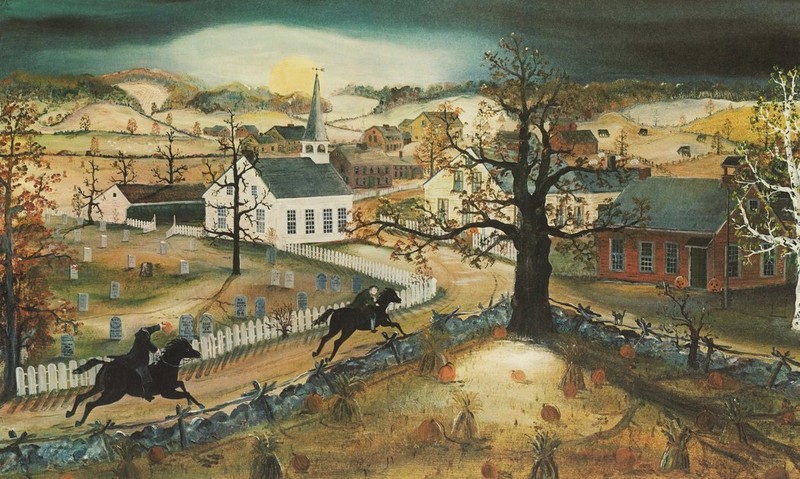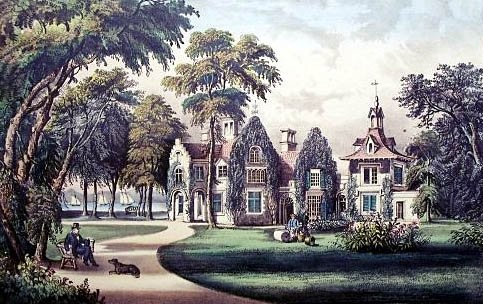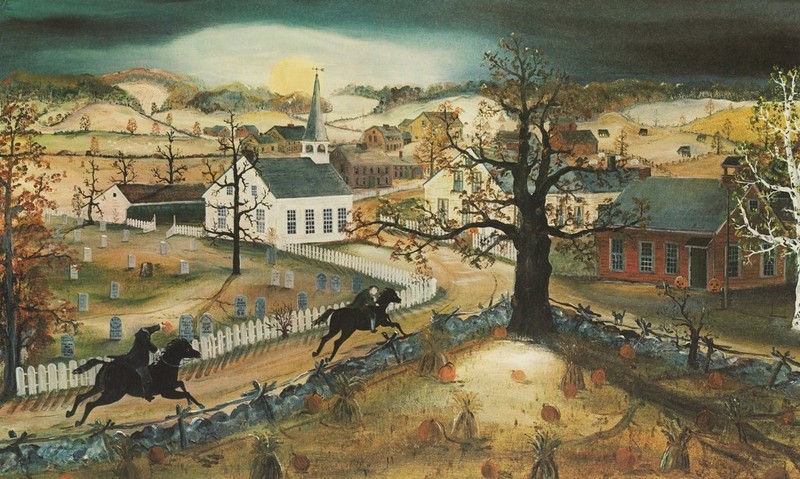Sunnyside, Home of Washington Irving
Introduction
Text-to-speech Audio
Images
"Sleepy Hollow," by Will Moses; a 1991 lithograph on display at Sunnyside

"Sunnyside-On-Hudson," by Currier and Ives; a 1857–71 lithograph

"Sleepy Hollow," by Will Moses; a 1991 lithograph on display at Sunnyside

Backstory and Context
Text-to-speech Audio
In 1835, upon his return to New York following a 17-year stay in Europe, notable statesman, historian, and author Washington Irving bought an 18th-century farmhouse on the Hudson River, and transformed it into the historical literary haunt he would call "Sunnyside." On the border of Tarrytown and Irvington, the home was sometimes referred to by Irving as "Wolfert's Roost," after the Dutch tenant farmer Wolfert Acker who built the stone farmhouse. With the help of artist George Harvey, Irving transformed his new home into a "fanciful embodiment of an old Dutch mansion," though it brought together several different influences such as the architecture of Scotland, Spain, and colonial New York. He lived the rest of his life at Sunnyside, with the exception of his four-year stint as the United States ambassador to Spain.
Despite the fact that Irving never married or created his own family there, Sunnyside was a hot spot from the beginning. Not only did he share his residence with extended family, but he entertained artists and politicians there, as well. It also played a big part in the Romantic Movement and Hudson River school of writers, artists, architects and more as they "forge[d] a national identity through art and letters and buildings, conjoined to the Hudson River and Catskill Mountains landscape."
However, it isn't likely that anyone loved the home as much as Irving himself, who once called it a "little paradise." Not only the home itself was charmed by his artistic touches, though. The grounds also reflect the author's romantic vision of nature with its garden paths, vistas, waterways made to appear natural, and an exotic wisteria vine that -- still growing today -- envelopes the house.
Sunnyside remained in the Irving family until 1945, when it was sold to John D. Rockefeller, and was opened to the public two years later. Today, the home is owned by the Historic Hudson Valley, and its current appearance is much the way it was when Irving lived and wrote in it.
Sources
“SUNNYSIDE, WASHINGTON IRVING RESIDENCE.” The Irvington Historical Society (New York) - National Register of Historic Places, www.irvingtonhistoricalsociety.org/nrhp/nrhp01.html.
“Washington Irving's Sunnyside.” Historic Hudson Valley, www.hudsonvalley.org/historic-sites/washington-irvings-sunnyside.
Hodara, Susan. “Exploring Washington Irving’s Hudson Valley Haunts.” The New York Times, The New York Times, 23 Oct. 2014, www.nytimes.com/2014/10/26/nyregion/exploring-washington-irvings-hudson-valley-haunts.html?module=Search&mabReward=relbias%3Ar%2C%7B%222%22%3A%22RI%3A17%22%7D&_r=0.
